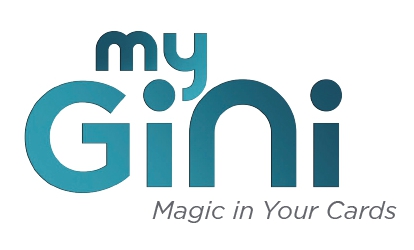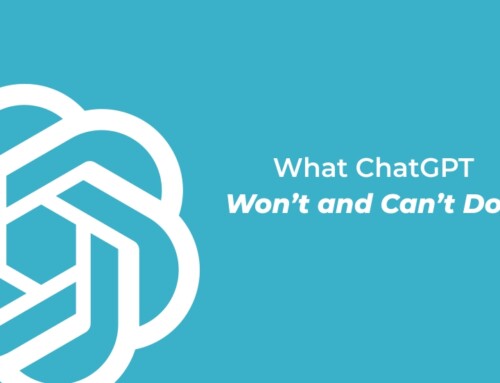
My dad was a wise man. He imparted many words of wisdom that I still use today. One of his phrases was this: “Time is the only democratic resource given to mankind.”
By this, he meant that all of us – no matter how rich or poor, young, or old, male, or female, a CEO or shepherd – dispose of the same 24 hours every day. Not a second more, not a second less.
How we utilize our time as a resource eventually defines whom we become.
Time and time again, large companies who have been successfully around for a long time, fail to adapt. Some CEOs find it impossible to change their outsized organizations and start buying smaller, more innovative companies. In general, start-ups operate with a clear sense of purpose, structure, and culture. They execute fast as they are smaller. However, difficulties arise again once they begin to grow. Most commit the same management errors more established companies do. Faced with these challenges, founders often exit the business by selling off their companies to start another venture.
Yet, for capitalism to work effectively, big companies must also innovate. Their more extensive resources and workforce quality are indisputable, and societies will be better off when they contribute more.
Companies hardly become innovative when their top managers start discussing it in internal meetings. Most large corporations set up innovation departments or establish innovation committees. We see more corporations starting their venture capital arms, searching for outside ideas. These are all positive initiatives, yet rarely deliver the desired outcomes.
Innovation requires its own culture to be interwoven in the way people work. Easier said than done. How can large companies embed innovation into their corporate culture? Here are some ideas:
- Innovation Comes from Focus, Not Random Idea Generation
We need to start from the very beginning. Objectives of a company must be very clearly stated addressing exact needs. Without a clear definition and focus, decorative mission statements do not guide or motivate employees to be more innovative.
For years, Apple said that its ability to see the big picture and develop innovative ideas was because it’s both a software and a hardware company. Even this definition needed more finetuning. Apple did avoid going into other consumer products like TVs, audio and video equipment or mainframes to stay focused.
Like Apple, banks can’t have their fingers in so many pots: they can’t bring inventions in payments, wealth management, retail, corporate, and investment banking simultaneously. Moreover, no internal and external resources would suffice to innovate in all those areas.
This is where the famous SWOT analysis comes into the picture. Not once in five years as it used to be. It needs to be performed each year in the annual budget practice. Which areas indicate more growth potential? Which areas can see less competition? Which areas can be improved, and which ones suit the company better in terms of internal resources? After an in-depth analysis, the company should define its focus areas for the following years. Internal and external communication should then reflect this focus. For instance, if the focus is going to be credit cards, then “What’s in your wallet” as a slogan suits Capital One better than “for all your banking needs.”
Right vision, solid analysis, and focus. Without a clear direction, new temptations like blockchain, instant payments, or grabbing a higher share of the millennial market wouldn’t be anchored successfully with the corporate strategy and wouldn’t lead the company anywhere.
- Innovation Emerges from Limited Time, Not from Abundance
Most large corporations face no shortage of cash flow. This misplaced feeling of security is the enemy of innovation. We change only when we’re faced with a clear and imminent danger.
Managers must create an environment where the hell will break loose if the teams working on projects do not deliver on time. I don’t mean to create a climate of fear and anxiety, but people working on specific projects must know they are bound by a timeline and clear goals to achieve. Like with your favorite sports teams, there must be a fear of losing.
Time should be everybody’s most precious resource. If you’re working on something, chances are others are working on it, too. Think of it as a window of opportunity. It won’t stay open indefinitely.
Teams that work on exciting projects should understand that it might not seem exciting three years from today. Firm deadlines need to be in place.
- Small Teams – Not Big – Are Essential to Create
People need attention. Babies and small children cry more often because they need attention than because they are in pain. That’s human nature. Managing a big team in which no one receives recognition runs contrary to human nature. Small is easier to manage, recognize, and reward. Therefore, we need task forces, agile teams, work groups, and project teams.
Small teams with a clear and narrow focus, pressured by time and other constraints innovate, not giant entities with practically unlimited resources.
The ideal approach for larger companies is small within big. Take the big institution’s resources, know-how, and brand name and use it in your own smaller “virtual company” to focus, innovate and deliver.
- Please, no “Innovation” or “Digital” Departments!
One of the most common mistakes most CEOs make when trying to make the firm “more innovative” or “more digital” is to bring in an outsider to ignite change, someone different from the company’s overall culture. This person is given a job title like “Head of Innovation” or “Head of Digital.” It is a mistake, yet companies around the world keep doing it. Why is it an almost unachievable task?
- Organizations can not change with a single department. An organization is a social animal with a big body, so it would be wrong to assume that one department could change how the entire entity operates. On the contrary, most likely, it will be rejected by the companies’ existing “silos.”
- The “me vs. them” mentality. Pinpointing a person and a department as “innovation champions” sends the following message to the rest of the organization: “The way you guys work now is obsolete. We need to change, but as we know that you can not change on your own, we’re bringing someone to help us out.” Naturally, this is different from the message the top management wants to convey, but it is all about how others perceive it. It results in putting the rest of the organization on the defensive.
- Innovation is a way of life. Innovation needs to underpin every facet of day-to-day work. There are no two distinct work approaches, like “business as usual” and “innovative work.” They must be combined. They need to be merged and operate as one. When people feel they’re in the “business as usual” camp, they immediately become demotivated.
- When innovation projects are placed under “business as usual” departments (read Line of Businesses with P/L responsibility), funds can more easily be allocated to new projects as those LOBs already generate revenues, and their managers will expect new innovative projects to boost profits further. And if those projects fail to generate expected returns, they will be shut down, as most LOBs are responsible for a defendable bottom line. However, when such projects fall under the Innovation Departments, they will continue to live in purgatory eating resources.
For instance, we had an R&D department at Garanti Payment Systems, but there were other sources of good ideas. Our culture was very much driven by the three core values that we hammered almost every day:
- Respect among individuals.
- Put yourself in the customer’s shoes.
- There is always a better (cheaper, faster, etc.) way of doing what we do. Find it.
This third requirement urged everyone to come up with ideas for improvement. We awarded suppliers who brought new ideas to us. We attended conferences and took them seriously in search of good ideas. We read books looking for inspiration and brought the good ideas we found into our project meetings. Eventually, before finalizing the annual plan for the following year, we went back and asked what innovation/improvement/betterment/new technology projects we would undertake to support our strategy. We had a 1-pager that summarized all major upcoming projects and highlighted those related to significant innovation initiatives, which we used in our weekly management meetings.
One good example was driving contactless payment transactions in Turkey for Garanti Bank. Many of our divisions were involved in this initiative. The Acquiring Unit identified relevant merchants and deployed the new pos terminals, Card Issuing Department identified the right segments to offer this unique feature first and designed and ordered new the plastic cards, (both acquiring and issuing departments acted as LOBs within the Payment Systems Company), Marketing prepared promotional materials and films, R&D made sure all systems worked and explored other form factors like key fobs and phone stickers to drive usage, the Charge-Back department worked with BKM (Interbank Card Center of Turkey) to define rules, Fraud department determined new red flags in this new environment and so on. And every year, individual departments rolled out many smaller ones. The people around us knew we were doing new and exciting stuff every year. We believed in it. So did our customers and other stakeholders.
- Timing
Many managers believe innovation requires using today’s profits to generate tomorrow’s revenues. It poses a dilemma for CEOs and CFOs who are under pressure to maximize quarterly earnings. The internal pressure becomes even greater if the company already has an innovation department that finds it difficult to create sizable revenues and spearheads projects that are too theoretical or “ahead of their time” because the ecosystem doesn’t provide the adequate context to support them.
Going back to Garanti Bank’s contactless payment transformation, we learned early on those people who had tap-and-go cards used their cards 10 percent more often than the cardholders who did not have them. That was more than enough to justify the additional cost of the plastic. But when we introduced it in 2006, we were so far ahead of the market that most other banks wanted to avoid investing in contactless POS terminals, costing an additional $120 per unit. Although we led the acquiring market with almost 25 percent share, we still weren’t large enough to create enough momentum for an entirely contactless environment. Even if we had a more dominant market share, it would have been too expensive for us alone to invest in it. Therefore, for Garanti Bank, the moment for contactless technology didn’t arrive until 2012, when we started a co-branding loyalty program with the largest supermarket chain in the country, upgrading its POS terminal system to contactless technology, changing the customer experience at the point of sale. Then in 2015, BKM, Visa and Mastercard Europe announced mandates to replace all existing terminals with contactless technology in five years, paving the way to lower the average cost of new terminals and speeding up the migration.
Therefore, if an innovation ushers in a new way of doing things, companies need to ensure that they do not jump on the innovation bandwagon too quickly without believing that the whole industry will be ready soon to move along. It’s challenging to develop fertile terrain by simply introducing an innovation.
Then when would be the best time to introduce a brand-new product or service? When you can build ecosystems around it. What is an ecosystem?
An ecosystem is an environment that places your product at the center of an experience that is consistent across various interaction points.
In the mid-80s, Lotus123 (today’s MS Excel) was the first spreadsheet for PCs that allowed regular users without programming knowledge to harness the computer’s abilities. PC sales took off when “personal computers” could be leveraged for actual personal use. However, even a great new product like Personal Computers needed a user-friendly ecosystem to be accepted by the masses.
iTunes enabled the masses to download music hassle-free and legally, bypassing the cumbersome process of uploading physical CDs one by one. That’s how iPods became so popular, and music-downloading replaced CDs. End users appreciated this feature and personal music experience became mainstream once more after Sonny Disc-man. However, convincing the entire music industry took time and a personality like Steve Jobs.
When we at Garanti Payment Systems replaced all the POS terminals at the supermarket chain’s more than a thousand locations and modified the payment process to start the transaction by tapping the card first, 80 percent of all Migros card transactions became contactless. On the other hand, Apple Pay in the US struggled until a minimum of 60 percent of terminals became contactless. In 2017, only 1.5 million out of 12 million POS terminals in the US were contactless enabled, whereas after Covid in 2021, nearly 80% are. And in 2022, Apple Pay became the most used contactless method in the US.
The sales of smartphones exploded when 3G enabled much faster connection speeds. (Few people remember the device Palm, the first digital personal communicator. It was ahead of its time since it became available without 3G and sufficient connectivity and could not live up to its hype.) When both Android and Apple opened their technology to app developers, app stores began taking off, further pushing the sales of smartphones. (And if Android did not open its operating system to all other device manufacturers, Google’s competitive position against iPhone would be nowhere near today.) Siri caught on since Apple spent a significant amount of communication money on it. But only when Amazon pushed its digital assistant Alexa did voice assistants gain traction. Alexa started a stand-alone product rather than a feature on the phone. It is a reminder of the importance of narrowing down and dominating a small segment.
Innovations bring change but with the right timing and adequate ecosystems.
- The Need to Be Ubiquitous
How can you accelerate timing? Is this possible? Well, sort of. The entire industry must move for innovations that will change people’s behavior. For instance, the Bonus Cards we issued at Garanti Bank had been chip and PIN-enabled since 2000, but the other banks on the Turkish Interbank Card Center (BKM) board needed to be convinced to adopt the chip and PIN technology. Once it was achieved after bitter arguments and five long years, BKM placed rules, incentives, and liability shifts for such a movement for all the banks in the country. When most of the POS systems were ready, BKM began its nationwide PR and advertising campaign for chip and PIN. That was in April 2006. We at Garanti bank had to wait five years to activate our PIN-enabled cards. We believed communicating a non-uniform customer experience would have created chaos at the point of sale. We waited, yes, but since all the banks worked together using EMV specifications, cardholders could customize their PINs at any ATM or POS terminal, which greatly facilitated the smooth adoption of chip and PIN technology in just under a year for millions of cardholders.
You’ll need to work with your competitors when changing an entire infrastructure. It’s a tedious process, but it’s critical if your goal is to put customers at the center of everything. For instance, all the EMVCo members (i.e., Visa, MasterCard, Amex…) needed to work closely together to introduce tokenization (changing the card number for each transaction) for online and contactless transactions to increase security and avoid fraud.
It is true for most industries. Tesla and other electric car manufacturers, private distribution companies, and city governments must collaborate to build adequate networks of charging stations. Apple, Amazon, and Google are uniting on smart-home tech under a standard called Matter. The new standard, arriving in 2023, provides a common language so all your devices can communicate with each other and will make setting up smart homes much more straightforward. Waymo and other self-driving car manufacturers must cooperate for driverless cars – and the list continues. What happens when companies fail to collaborate? Either the market ends up with a lousy user experience like the chip migration in the US, which is the only county in the world that uses chip technology on the cards without entering a PIN, or regulation intervenes. Apple will need to move away from its “Lighting Connection Port” to USB-C, although earlier it refused to change it for iPhones. European Commission mandates it as the rest of the world adopted USB-C.
- Let People Know
Until the mid-2000s, before the advent of social media, communicating a new product or service to consumers was extremely expensive. Even today, running a televised ad during the Super Bowl might set you back by tens, if not hundreds, of millions of dollars. Fortunately, digital media makes it easier to run a targeted communication campaign.
Most new ideas don’t come from marketing people but from engineers since they are the ones who build stuff. We love and appreciate engineers, but generally, they aren’t the best communicators to inform the world of what they just created. For this reason, much innovation goes unnoticed. In today’s world, no one should assume that a beautiful product will sell itself.
The business case of building a new service or product should include its communication budget. Not only its production. Even if a budget is in place, the existing communication channels used to promote new products often prove ineffective. An innovation is new to the market and typically integrates several novel features. People who built it desire to highlight these new features. Hence, most innovations are introduced like advertorials rather than simple ads. These ads are jam-packed with information to tout all the new features, while consumer attention spans have been getting shorter. If you insist that a new product has several killer functionalities, you’re better off communicating each functionality one by one rather than all simultaneously. But remember. Even broad and effective communication strategies alone can’t forge a good ecosystem.
Reading these lines, you might ask yourself, “if we wait for the others to catch up, then why innovate?” The answer is simple: when your thinking is ahead of the game, it stays ahead. As a result, you’ll have greater in-depth knowledge about the systems you operate in, enabling you to improve faster and more frequently than your competitors.
The next question is how to put these rules described above to work. Again, you embed them into the way you operate.
- No matter how large the company is, its workforce should be organized around smaller units with P/L responsibility. (Profit and Loss, short for Income Statements)
- Within these units, clear objectives must be defined. These goals should include new ideas and innovative solutions. Those objectives should be communicated often and be visible, as teams can only be managed efficiently by cementing common goals.
- Transform those goals into KPIs (Key Performance Indicators)
- Let those teams open projects to deliver these KPIs with firm deadlines.
- Measure and share those KPIs and deadlines
- Reward people when projects are finalized rather than waiting until the end of the year.
Make your Business Lines the champion of new ideas. Let them innovate.
When you work on new ideas, good things happen. Customers notice and award you with more purchases. People who work in innovative companies take pride in the inroads made, and employee engagement rises. Corporate performance improves.
While you were reading these words, the universe continued to evolve and expand. The planet was spinning, and the cells in your body were at work. Nothing remained still. Nothing ever will be. For this simple reason, companies need to change and evolve, too. While they’re at it, why not change for the good? Innovation inspires you to be better and reach higher. ■
Note: The above article is from “Book of Bonus,” Chapter 7 on Innovation. You can order it here.
TABLE OF CONTENTS
- STRATEGY
- STRATEGY TO STRUCTURE
- STRUCTURE TO STYLE; THE CULTURE ISSUE
- STYLE TO PEOPLE. HUMAN RESOURCES
- MARKETING & BRANDING…CREATING A PRODUCT
- EXECUTION = DECISION MAKING (JUST DO IT!)
- INNOVATION AND DOMINATION
- YOU ARE BIG AND FAMOUS… WHAT IS NEXT?
- THE CONCLUSION: A QUESTION FOR MY READERS
ANNEX: THE FUTURE OF PAYMENT SYSTEMS





